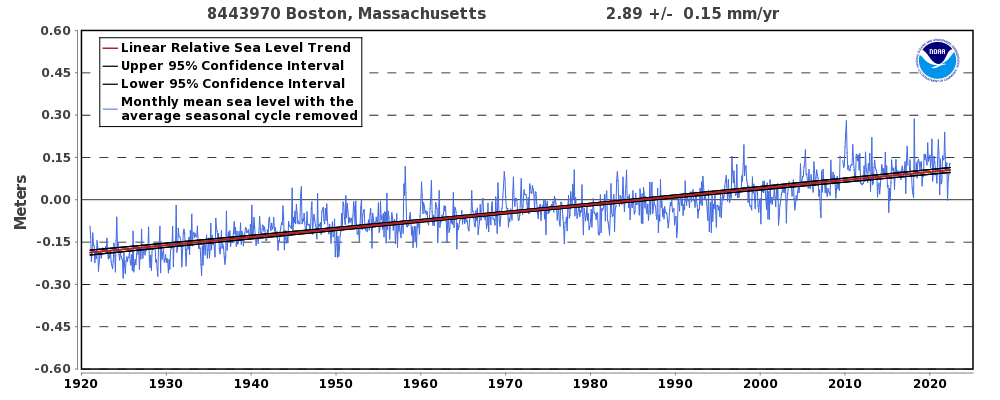A recent article on a Boston news site presented polling data of their readership’s opinions on climate change, and how the alleged impacts may be mitigated. While the writer of the article seemed to lean hard on the climate alarmism side, and pulled quotes from readers to support that alarmism, the majority of readers appear to be climate realists.
The article, “Here’s how readers think Boston should tackle climate change,” reports on a survey of Boston.com’s readership. When asked if they are concerned about climate change, the majority of those surveyed said no; 55 percent of readers said they were not concerned about climate change, and 22 percent said lawmakers are already doing enough to address it.
This is despite the fact that Boston leadership, including Mayor Michelle Wu, is supportive of implementing strict climate change related policies, including banning fossil fuels in new building construction.
The post goes on to explain that locals are “skeptical that climate change can be addressed by local lawmakers.”
While many of the responses are predictable climate-activism talking points, others provide measured, thoughtful ideas on how the city can prepare for future natural disasters, particularly in the case of hurricanes and other flood-causing storms.
One reader said the government already wastes too much taxpayer money “on the dark hole of ‘carbon’” and don’t invest enough on conservation, easements, and fortification against sea level rise.
Other popular ideas include recycling and composting, improving public transportation (a project that is popular regardless of climate change), and sea walls in vulnerable areas.
As one might note from the listed ideas, one particularly strong concern that readers expressed was over the sea level and flooding issue. Climate Realism has covered the issue of sea level rise on the east coast multiple times, including here, here, and here, for example, and has even debunked claims that Boston’s rate of sea level rise is accelerating.
In a post titled, “No, Climate Change Will Not Destroy Boston Waterfront Living,” Climate Realism is able to show how cities like Boston could be uniquely impacted by the natural sea level rise the Earth has experienced since the end of the last ice age—no man-caused climate change necessary—because they are built on manmade sandbars and landfills that were used to expand buildable area for the city. Land subsidence is a large contributing factor in coastal flooding, and is often caused by over construction, withdrawals from aquifers, and the destruction of natural wetlands that would normally hold the excess water from storms or slow a storm surge.
The region has been so dramatically altered, as shown in the graphic below, that the coastline is hardly recognizable, with the isthmus or “neck” of Boston in particular being widened over time to accommodate more habitable landmass.

However, the good news is that sea level rise tide gauge data shows no acceleration in Boston Harbor since the 1990s. In fact, sea level has remained more or less the same there since 2010, according to data from the National Oceanic and Atmospheric Administration’s Tides and Currents database. (See below)

As residents of a historic city built on “reclaimed land,” or man-made structures that greatly expanded the usable landmass of the city, Bostonians are aware of their history. They are also acutely aware of the threats posed by land subsidence, and the natural impact of ocean tides and storms. That is why while they may not be concerned about climate change overall, they do have reasonable cause for interest in public works projects and the maintenance of Boston’s artificial landmass.

















